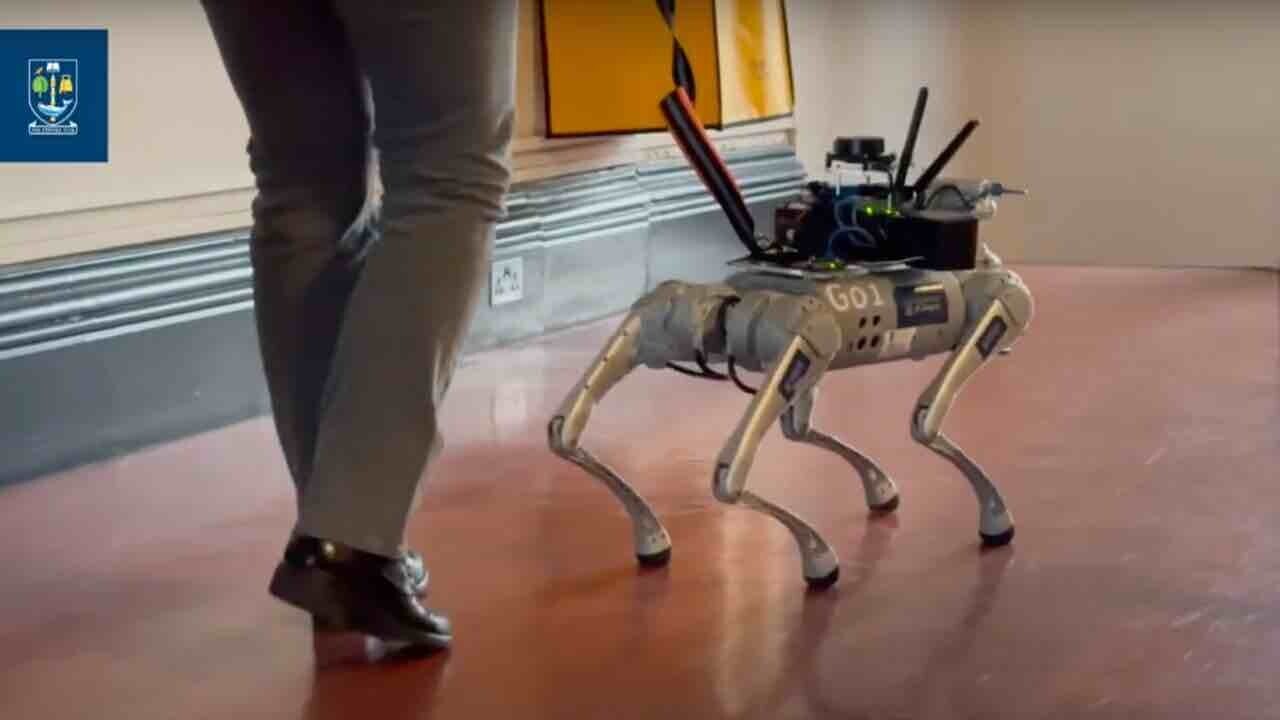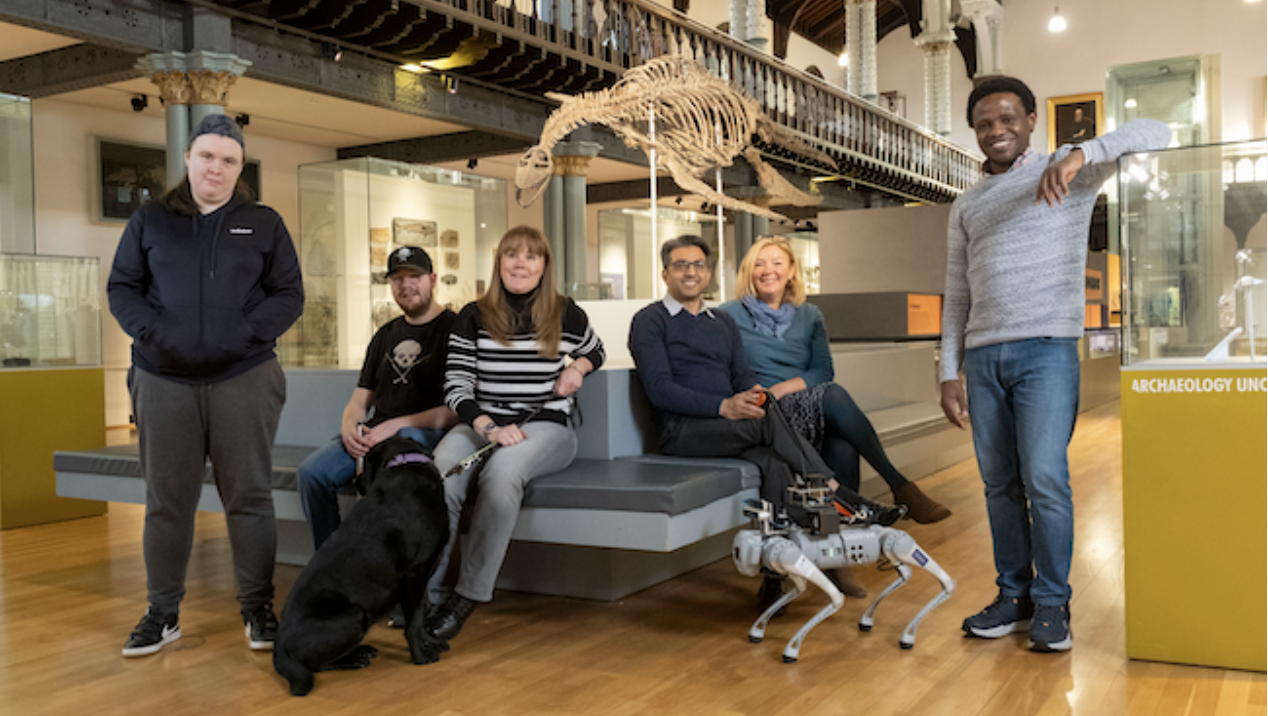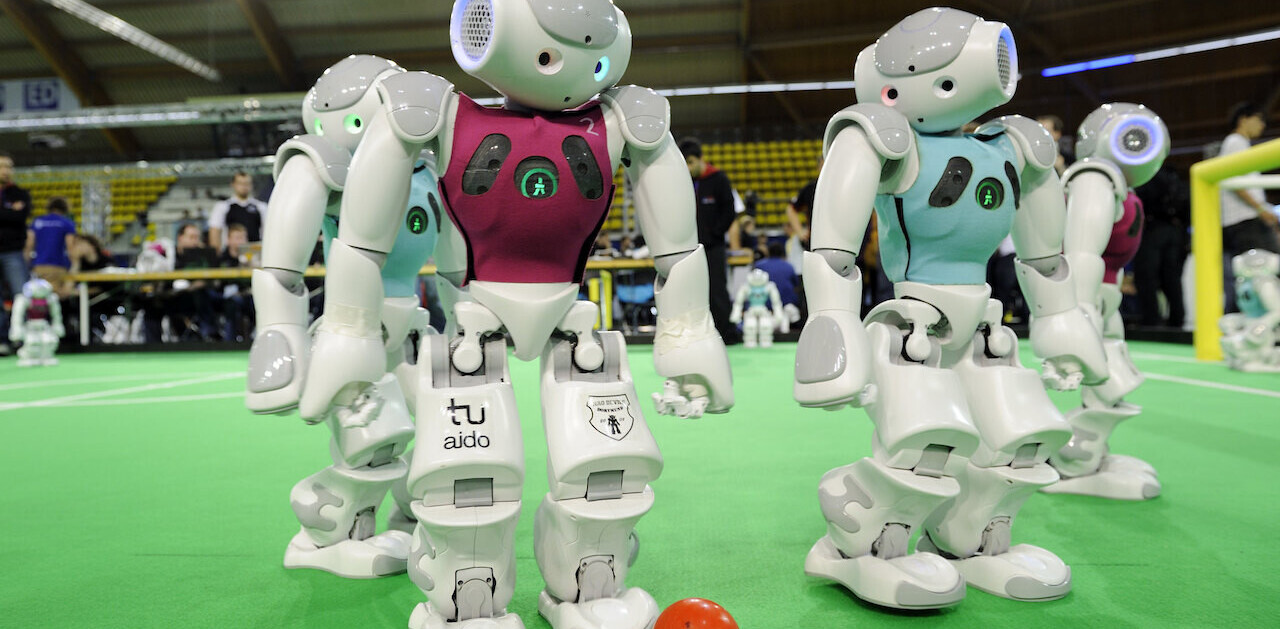
Automation doesn’t only threaten human workers. Our canine colleagues may also need new jobs because there’s a new robot guide dog in town — and it doesn’t even need walkies.
Named Roboguide, the quadruped was bred at the University of Glasgow. The research team built the prototype pooch to support blind and partially sighted people in indoor spaces.
Their design solves common problems in assistive tech.
“One significant drawback of many current four-legged, two-legged, and wheeled robots is that the technology which allows them to find their way around can limit their usefulness as assistants for the visually impaired,” said Dr Olaoluwa Popoola, the RoboGuide project’s principal investigator.
“Robots which use GPS to navigate, for example, can perform well outdoors, but often struggle in indoor settings, where signal coverage can weaken. Others, which use cameras to ‘see,’ are limited by line of sight, which makes it harder for them to safely guide people around objects or around bends.”
To overcome these limitations, sensors on RoboGuide analyse the device’s surroundings. Using software developed by the team, the high-tech hound then learns optimal routes between locations. As the robot roams, the sensor data guides it around any obstacles it encounters.
The mechanical mutt also obeys its owner. With the aid of large models, the RoboGuide understands human questions and comments — and even responds verbally.
This unusual dog trick was showcased in December at the Hunterian, Scotland’s oldest museum. During the trial, the polished pooch gave interactive speeches on six exhibits and guidance around the museum to volunteers.

With the tour a success, the researchers can focus on their main mission. Ultimately, they aim to create a commercial product that can support some of the 2.2 billion people with sight loss.
It’s an objective that’s backed by two leading charities. Both the Royal National Institute of Blind People (RNIB) and Forth Valley Sensory Center (FVSC) are supporting the project.
“Mobility is a big issue for the blind and partially sighted community,” said Jacquie Winning, the chief executive of FVSC. “RoboGuide is a wonderful solution to that problem, and we are delighted to help test this innovative and creative robot.”
As for RoboGuide’s living rivals on the job market, the precious pups might need to learn new tricks (sorry).
Get the TNW newsletter
Get the most important tech news in your inbox each week.





